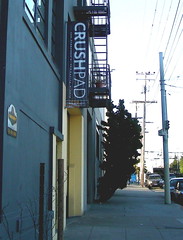 I am part of a group of twenty or so wine lovers who decided to make their own wine through the winemaking assistance and facilities of Crushpad, a community winery located in San Francisco. Crushpad allows you to choose your level of participation in the winemaking process and be involved in key decisions. Making a wine at Crushpad starts with selecting a vineyard and grape variety and then creating a winemaking plan with the Crushpad team that specifies the desired wine style as well as fermentation, aging, blending and bottling related parameters.
I am part of a group of twenty or so wine lovers who decided to make their own wine through the winemaking assistance and facilities of Crushpad, a community winery located in San Francisco. Crushpad allows you to choose your level of participation in the winemaking process and be involved in key decisions. Making a wine at Crushpad starts with selecting a vineyard and grape variety and then creating a winemaking plan with the Crushpad team that specifies the desired wine style as well as fermentation, aging, blending and bottling related parameters.The first time I came to Crushpad was in October 2004. Our wine was in a fermentation vat. It was a Syrah from the Clary Ranch vineyard, a cool area located in the Sonoma Coast appellation. That day, we learned how to punch down the cap and measure the brix level of the fermenting juice. A week after, the fermentation was over and we came back to press the wine and transfer it into our Burgundy barrel.
Then, last April, I was able to taste the wine after nearly six months of barrel aging. The wine was promising with a firm backbone and nice fruity and peppery flavors.
Finally, we came back to Crushpad last week for the last step. Our Syrah had been patiently aging for more than 15 months and was ready to be bottled. The Crushpad design team had already produced a label for the wine, based on a photo of the Clary Ranch vineyard taken by our friend Arnaud.
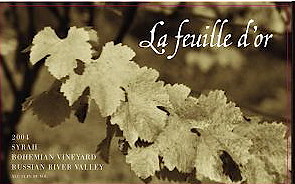
When I arrived, the Crushpad team was around an impressive bottling machine, making the last adjustments. For some reason, the labeling part was not functioning properly but the rest of the machine was working fine.
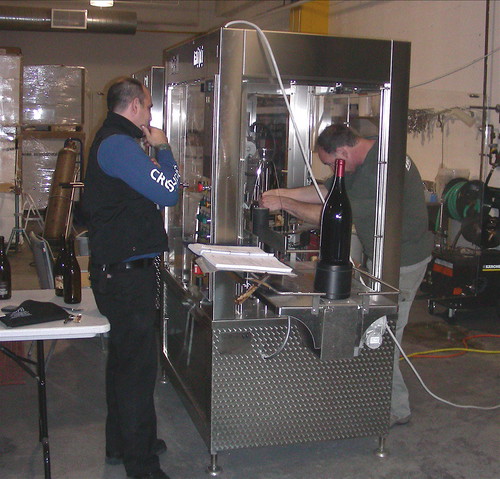
I was offered a taste of the wine. Since my last tasting of the Syrah, it had been blended with a dash (2.5%) of Viognier, in the Côte Rôtie style. The nose was very aromatic and appealing. On the palate, it was smooth and fruity with notes of vanillin oak. Overall, I found it very pleasant and easy to drink. According to the winemaker, this wine should rather be drunk young.
We quickly started the bottling process. Our barrel had a capacity of 228 liters, so we had to work on roughly 300 750ml-bottles, but in reality less because some people had also ordered some magnums.
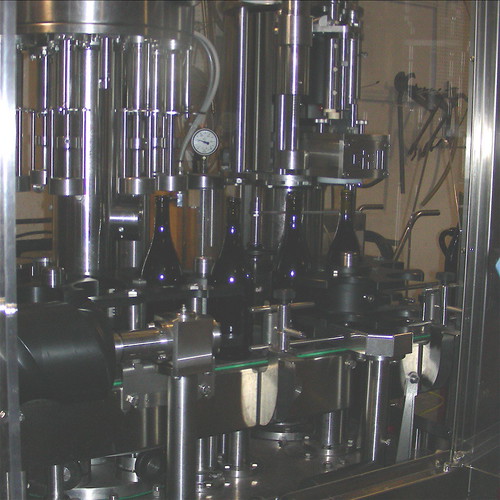
In a bottling machine, the wine is pumped from a storage tank to the machine where it flows in pre-measured amount into each bottle.
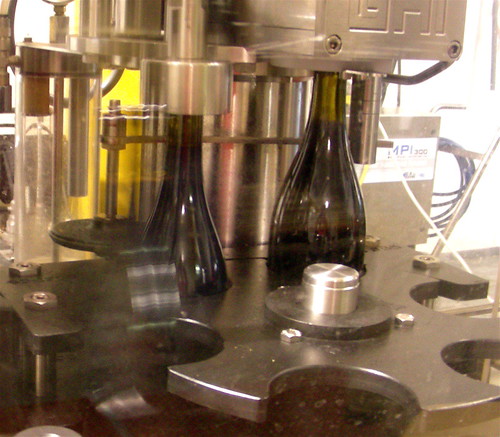
Then the bottles move to the corking area where a cork is inserted into each bottle. Finally, the bottles receive a piece of aluminum foil that is wrapped around their cork. At the exit of the bottling line, the bottles are ready to be labeled and put into boxes.
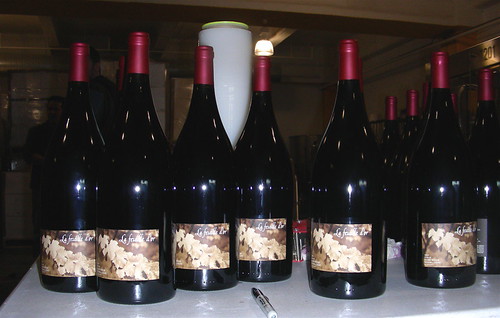
At the end, there was no wine left in the storage tank. All the bottles were in boxes waiting for us to be picked up. It was time to leave the friendly Crushpad team and allow the wine to rest. Now, stay tuned, we will taste the wine again in a year or so and see how it had evolved after some bottle aging.
Related stories:
• Making our own wine!
• Making our own wine: update 2
• Making our own wine: update 3
Technorati tags: wine food & drink
No comments:
Post a Comment